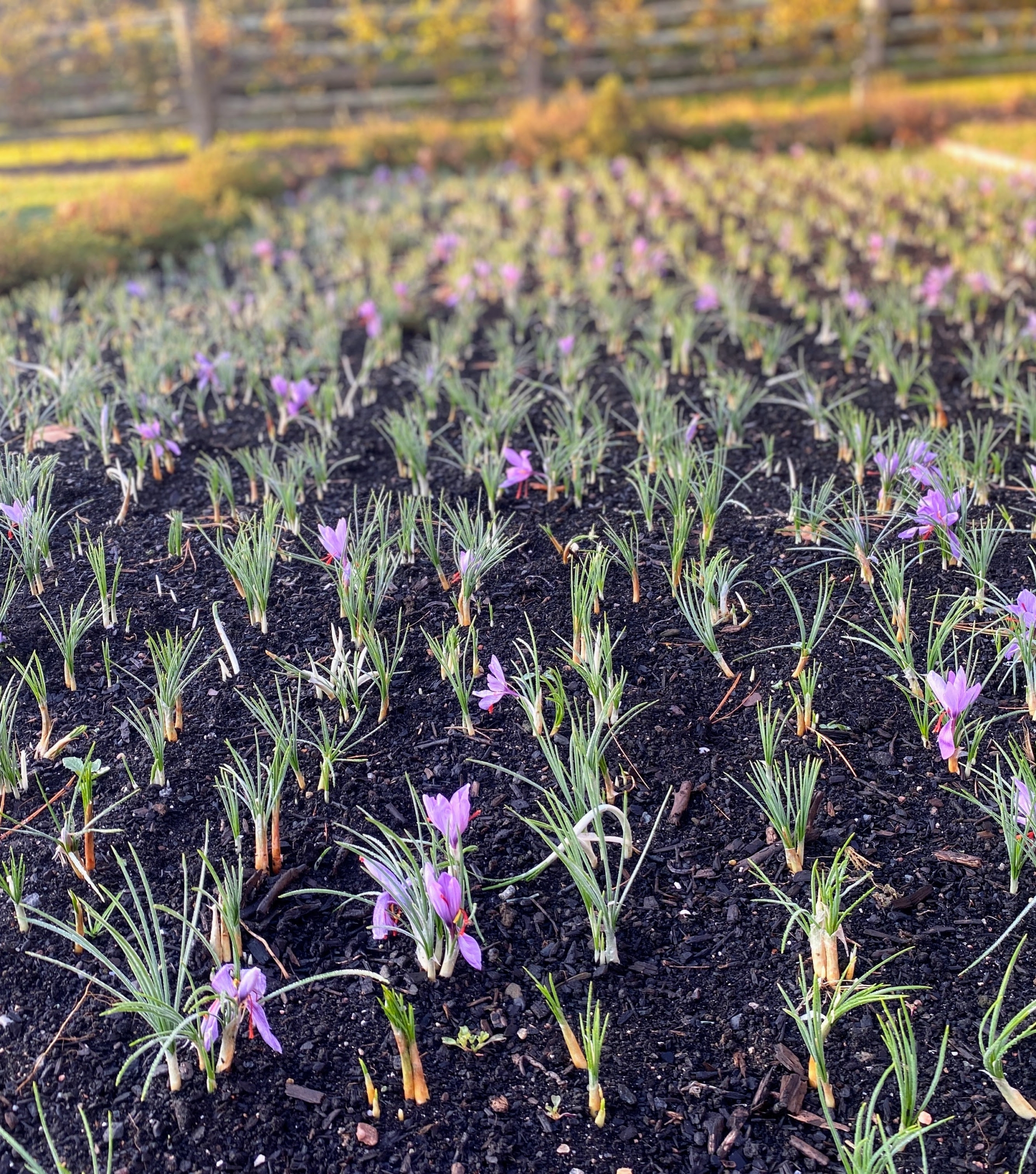The Crimson Gold: Unveiling the Secrets of the Saffron plant
Saffron, the world’s most expensive spice, has captivated civilizations for millennia. Its vibrant crimson threads, derived from the Crocus sativus flower, possess a unique aroma, a potent coloring power, and a complex flavor profile that has graced royal tables and medicinal concoctions alike. Beyond its culinary and medicinal applications, saffron holds cultural significance, woven into the fabric of traditions across the globe. This article delves into the fascinating world of the saffron plant, exploring its botany, cultivation, harvesting, uses, and the enduring mystique that surrounds it.
Botany and Biology: A Delicate Dance of Nature

The Crocus sativus is a perennial flowering plant belonging to the iris family (Iridaceae). Unlike many other spices, saffron is not derived from the fruit, seed, or bark, but from the stigma and styles of the flower. Each flower, a delicate purple bloom, yields only three stigmas, the female reproductive organs, which are the source of saffron. This intricate process of obtaining the spice contributes to its high value.
The Corm: The saffron plant propagates through corms, underground bulb-like structures that store nutrients and enable the plant to survive dormant periods. These corms are typically planted in late summer or early autumn, preparing for the autumn bloom.
Cultivation: A Labor of Love

Saffron cultivation is a labor-intensive process, demanding meticulous care and precise timing. The plant thrives in specific climatic conditions, primarily characterized by hot, dry summers and cool, wet winters.
Ideal Growing Conditions: Saffron prefers well-drained, calcareous soil and a sunny location. It requires a Mediterranean climate with distinct seasons. Regions like Iran, Spain, Greece, and Kashmir are renowned for their optimal growing conditions.
Harvesting: A Race Against Time
The saffron harvest is a brief and intense period, typically lasting only a few weeks in autumn. The flowers must be hand-picked early in the morning, before the sun’s heat causes them to wilt.
Hand-Picking: Harvesting is done entirely by hand, as machinery cannot replicate the delicate process of extracting the stigmas without damaging them. This labor-intensive process is a major factor contributing to the high cost of saffron.
The Chemistry of Saffron: A Symphony of Compounds
Saffron’s unique characteristics are attributed to a complex array of chemical compounds, primarily:
Crocin: This carotenoid compound is responsible for saffron’s vibrant red color. It is water-soluble and imparts a yellow-orange hue to food.
These compounds, along with other volatile oils, flavonoids, and antioxidants, contribute to saffron’s diverse properties.
Culinary Uses: A Touch of Luxury
Saffron is a prized ingredient in cuisines worldwide, adding a distinctive flavor, aroma, and color to a variety of dishes.
Paella: A classic Spanish rice dish, paella, is renowned for its vibrant yellow color and complex flavor, both derived from saffron.
Medicinal Properties: Ancient Remedies and Modern Research
Saffron has been used in traditional medicine for centuries, and modern research is validating many of its purported health benefits.
Antioxidant Properties: Saffron is rich in antioxidants, which protect cells from damage caused by free radicals.
Cultural Significance: A Symbol of Wealth and Prestige
Saffron has held cultural significance throughout history, symbolizing wealth, prestige, and spiritual purity.
Royalties and Nobility: Saffron was highly prized by royalty and nobility in ancient civilizations, used to dye fabrics, perfumes, and cosmetics.
The Challenges and Future of Saffron
Despite its enduring popularity, the saffron industry faces several challenges, including:
Adulteration: Due to its high value, saffron is often adulterated with cheaper substances, such as turmeric or safflower.
The future of saffron lies in addressing these challenges through advancements in technology, research, and sustainable practices. Continued research into its medicinal properties and culinary applications will further solidify its position as a valuable and sought-after spice.
Conclusion: The Enduring Legacy of Crimson Gold
The saffron plant, with its delicate flowers and precious stigmas, embodies a rich tapestry of history, culture, and science. From its ancient origins to its modern applications, saffron continues to captivate and inspire. Its unique flavor, aroma, and color, along with its potential health benefits, have earned it the title of “crimson gold.” As we delve deeper into the secrets of this remarkable plant, we gain a greater appreciation for its enduring legacy and its continued relevance in our lives.


